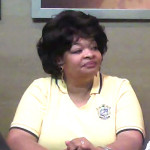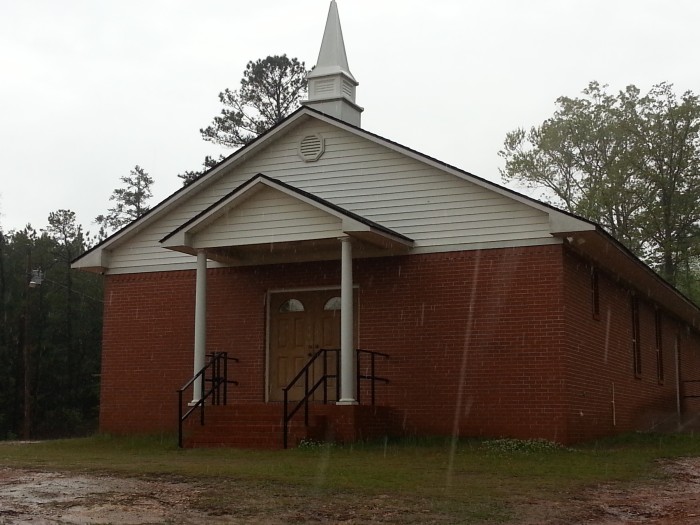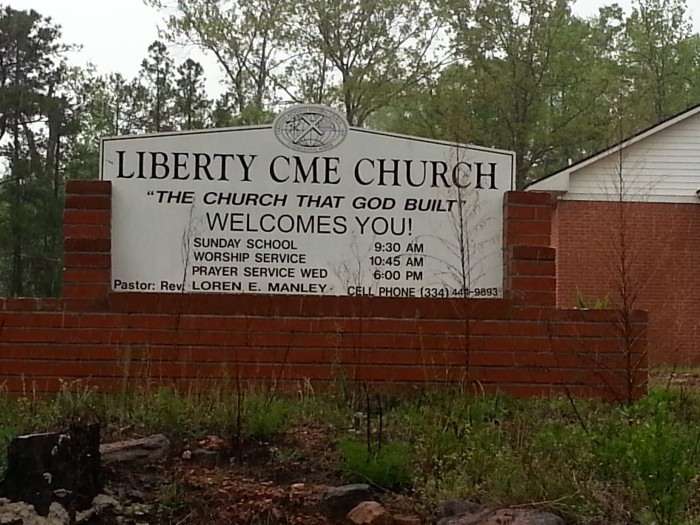This Information is derived from Genealogical Information generated and presented at the 2011 Peters-Gazaway-Clements Family Reunion
(The information herein was shared by Lucretia Hart aka “Curly” and reproduced by Charlotte Clark-Frieson, for the website. It is available as a .pdf download for any family member who would like to access it. Please see the link at the end of this page)
PREFACE
This history was traced by all methods possible. The methods used by Ynez and Bea included the following sources:
U.S. Census records
Chambers County Courthouse records
Records and resources at the Federal Archives in Washington, DC
Records and resources in Los Angeles, CA
Records and resources at the Regional Archives in Chicago, Illnois (Mr. Wallace Watson)
Chamers County Historian and Genealogical researcher (Mrs. Ruth Royal Crump)
References and resources at the Newberry Library in Chicago, Illinois
References and Resources at the Library of Congress, Washington, DC
Elder family members memories’
INTRODUCTION

As our family expands, those who lived through the early days in Chambers County find themselves surrounded by generations who have no knowledge of those days. They will often attempt to pass on the family history and what it was like in those days to the younger members in bits and pieces, to the best of their recollections.
Still later, as the family continues to expand, its history began to become vague, memories began to fail. It also becomes evident that those who shared in the beginning are leaving us. Then two or three members will say “we better put our family history on paper before all who remember it are gone”. That is how this history came to be written.
At the very start, I realized that it was no easy job. Unfortunately, our family did not keep good written records. It was necessary to check, double check and cross reference all information for accuracy.
I knew before I started that one or two would probably not be happy with the end result, but regardless of its shortcomings, I hope that you will find this brief history a source of useful information, amusement and perhaps even inspiration.
Love,
Bea Coley
“The Peters Family History”

The name “Peters” comes from Petersen. The Petersens were immigrants from Sweden. When they left Europe they could not speak English. Lacking knowledge, they shortened their name to Peters, because they thought Peters sounded more like the English language.
Upon their arrival in America, they settled in New Hampshire, later migrating to Alabama, Georgia and Florida. There were few Peters who migrated to the three Southern States. They only owned a few slaves who worked their plantations.
The Peters who Migrated to Alabama fathered children by some of the “Creek Indians” and “Negro slaves.” In Georgia it was “Cherokee Indian” and “Negro slaves” and in Florida, it was “Seminole Indian” and the “Negro slaves.”
Jim Peters, the slave owner fathered male children by his Negro slave Sarah. Sarah was married to Negro slave Jim Peters and she supposedly had one son by him.
Jim Peters thinking he was doing a kind gesture toward Sarah, left her in his will to his wife.
When Jim Peters died, his wife immediately sold Sarah off, leaving Negro Jim Peters to raise the sons until he married again.
William Berry Peters (Caucasian) born in 1823 in Georgia, was a confederate soldier. Before he entered the Army, he migrated to Alexander City, Alabama. It is coincidence that the first generation, Jim Peters was born in 1823, and that some of the “Negro” Peters migrated to Alexander City, Alabama also.
There is so much research to be done and my intentions are to continue until I reach our African roots.
Submitted by:
Ynez Clements-Gilmer
“WE ARE FAMILY”

By Ynez Clements-Gilmer
July, 1992
Celebration, family, reunion, descendant and heritage are words with significant meaning for each of us who have met in this place, on this day. The meanings that these words hold for us are descriptive and relevant because they summarize the purpose of our presence.
First, celebrate means “to commemorate an anniversary or holiday with festivity; to honor publicly; to have a good time.”
Second, the word family is described as “a household; parents and children; a; those descended from a common ancestor; lineage; a group of similar or related things.”
Third, reunion is defined as a “coming together again, as after separation”
Next is descendant, which is “an offspring of a certain ancestor, family group, etc.”
Last, heritage. Its meaning is “a tradition handed down from one’s ancestors.
So, how then can we best characterize this event? I believe that our presence here is symbolic, important, meaningful and encompasses all the above descriptions of celebration, family, reunion, descendant and heritage.
This year, we continue to publicly honor loved ones who’s spiritual presence is represented here throuh us and whose physical being is remembered. We are also here to honor with cheer and praise, the living.
“We Are Family”. Each of us are from a household that began with a man and a woman in whose lives you and I entered at birth. That union of man, woman and child created a family of parents and child or a family of parents and children.
We are here on this occasion to celebrate the unity of the Peters clan and to have a good time together doing it.
By
Ynez Clements-Gilmer
THE HISTORY OF CHAMBERS COUNTY
Chambers County, Alabama was organized on December 18, 1832. The county seat is LaFayette, and it is the 12th county in Alabama. The name origin is from Senator Henry Chambers.
The Creek Indians were the original residents of Chambers County. The Creek Indians were the original residents of Chambers County. The Creeks were children of the forest and was said to be filled with great uneasiness when in open country. I am sure that Chambers County was a paradise for them with its untouched timberlands and dense vines.
The Creeks knew no race prejudice. Research indicates they intermarried freely with the slaves brought into their nation by the white man. They also married the whites, as well as members of other tribes.
An enumeration of the residents of Chambers County, 23 years after it was organized (dated 2/17/1855) provided the following information:
…. 23,338 total residents
…. 11,407 slave residents
…. 6 free persons of color
During the decade prior to the Civil War, Oak Bowery prevailed as the social and cultural center of the county. First called Woodlawn, Oakbowery is located on Moore’s Road between LaFayette and Opelika on Highway #431. Moore’s Road was a Creek Indian trading path established prior to 1798. In 1835, the residents rejected the name Woodlawn and accepted the name of the Methodist Camp Ground, Oak Bowery. There is no reference to the form name in the records after 1835. This is the area that GrandPa Jim and his sons settled in after their move from the State of Georgia.
The first white settlers in Oak Bowery in the Spring of 1833 were the following individuals:
Thomas Allen (a white Methodist minister from Virginia)
Sam Jones (Thomas Allen’s son-in-law)
Webb Kidd (Thomas Allen’s son-in-law)
By 1835, Oakbowery history included the prominent and wealthy Dowdell (also spelled Dowdle) brothers listed below:
1. James Dowdell
2. Silas Dowdell
3. Wm. C. Dowdell
James Dowdle was the largest slaveowner in Chambers County. He had over 100 slaves prior to the Civil War. The Dowdle Plantation cemetery was where most of our earlier ancestors were buried, as well as many other African-Americans from various other plantations. This is a clear indication of the closeness of the white slaveowners during the 1800’s, as well as their dependence upon each other.
I visited this cemetery back in 1960 after convincing my father to take me to see where my ancestors were buried. I can remember that the cemetery was so overgrown that we had to park the car and walk for miles and miles because the old road leading to the cemetery was no longer accessible by car. I can recall that Grand-Pa Jim’s tombstone had the year (1912) of his death.
After the Civil War, all males residing in Chambers County over 21 years-of-age had to sign the Registration Oath before they could become a citizen of the United States. The white males also had to sign the Oath of Allegiance.
Most of the names on the Registration Oath were registered on August 31, 1865. What is interesting to note is that after I conducted a careful search of all the names as they appear on the Registratigon Oath, not one person carried the surname of Peters. I also discovered that four slaveowners in Chambers County each had over 100 slaves prior to the Civil War. Yet very few of their former slaves selected their surname on the Registration Oath.
What is apparent is that GrandPa Jim and his sons did not move to Alabama until after the war, and after the Registration Oath had been signed. This is verified by the fact that they did not appear on the 1870 Census. This move occurred between 1870 and 1880.
In an effort to illustrate the mindset of the residents of Chambers County as far as the Civil War was concerned, I should bring to your attention that Chambers County, Alabama had the first company of soldiers inducted into the Confederate Army and was the site (Fort Tyler) of the last battle of the Civil War.
After the Civil War, Oak Bowery declined. The village of Cusseta was becoming the hot spot for the county. Cusseta was formerly known as Tuckabatchee Harjo’s Town, a Cussetaw Indian Village. It was located on Osanippa Creek, in the south part of Chambers County. The land purchased by my father is located in this area and Osanippa Creek flows across part of the land.
Cusseta was often referred to as the crossroads of the county. Crossroads were the trading areas. Crossroads were located at two main roads or Indian paths. The Caucasian settlers would build a post or store and start to trade or sell their merchandise. Two of the most respected merchants in the area were Thomas Penn, Jr., and J.R. Scott. They formed a partnership and traded under the name of Penn and Scott.
By 1882 Chambers County had more African-American residents than whites. The following information was recorded:
….. 24,230 total residents
….. 11,650 white residents
….. 23,580 “Negro” residents
In 1882, an outbreak of typhoid, pneumonia, dysentery and consumption killed 37% of the population in Chambers County. This is a far cry from the days of the Creek Indians when pneumonia and fevers were readily cured by the Medicine Man’s superior medical knowledge.
In 1900 at the time of the Census (6/14/1900) GrandPa Hal had moved his family to Cusseta. Cusseta was a small but progressive village. At the close of the century, the village was under the control of three of the most honest men in the county. They were the Montgomery brothers and Frank a Vernon. GrandPa Hal and his family lived on the Montgomery Plantation.
AN EXAMPLE OF THE REGISTRATION OATH
Registration Oath
County of _______________
________________ Precinct
I, _________________, do solemnly swear (or affirm) that I will support and maintain the Constitution and laws of the United States, and the Constitution and laws of the State of Alabama; that I am not excluded from registering by any of the clauses in Section 3, Article 7, of the Constitution of the State of Alabama; that I will never countenance or aid in the secession of this state from the United States; that I accept6 the civil and political equality of all men; and agree not to accept to deprive any person or persons, on account of race, color, or previous condition, of any political or civil right, privilege, or immunity, enjoyed by any other class of men; and furthermore, that I not in any was injure, or countenance in others any attempt to injure, any person or persons, on account of past or present support of the government of the United States, the laws of the United States, or the principle of the political and civil equality of all men, or for affiliation with any political party.
THE HISTORY OF LIBERTY C.M.E. CHURCH
(See a Google Map Of This Location)
View Larger Map
Liberty Church as it is called today, is the root church for this family. Liberty Church was founded in 1863, and was formerly called “Bush-Harbor.” The original church was made from tree limbs and bushes. The top was covered with leaves and vines to protect the members from the elements of the weather.
Webster dictionary defines harbor as to rest or hide away; to give shelter or refuge.
Bush-Harbor was a popular place for Camp Meetings. Camp Meetings were important religious gatherings during the late 1800’s. People would travel for miles on horseback, in wagons, or on foot to the place of the meeting. They brought their own food and slept at night in their wagons or on the ground. The meetings usually lasted for several days. Several ministers usually presided over such meetings. Bush-Harbor was the largest church for the slaves and former slaves in Chambers County, so it was a popular place for these Camp Meetings.
They would often sing such invitations as “Swing Low, Sweet Chariot,” “All God’s Children Got Wings,” and “Joshua Fought the Battle of Jericho.” The theme in their songs, was LOVE, FAITH, AND SALVATION for every righteous person. In Africa, there is a saying that “the spirit will not descend without songs.” Our ancestors maintained this tradition by saying that songs were necessary to “get religion,” or “get happy”.
I am sure that these songs and Camp Meetings provided a release for their emotional stress. Our ancestors did not have an easy life in Chambers County. They worked from “Kin” to “kant”, this means that the work started at the time when you can see, and ended when you cannot see.
The current Liberty Church was built in 1909 under the direction of Reverend D. Hill. The cornerstone was laid on July 29, 1911.
UPDATED HISTORY

In February of 2009, Statewide newspapers carried the story of the burning of two churches. One of them was Liberty CME.
“Fire destroyed two churches in rural Chambers County on Saturday morning, Alabama State Fire Marshal Ed Paulk said. Paulk called the fires at Union Hill CME Church and Liberty CME Church near Oak Bowery in northern Chambers County “highly suspicious” and that a criminal investigation is underway. The Union Hill CME fire was reported at approximately 4:30 a.m. Central Time. The Liberty CME fire was reported late Saturday morning. “We have begun our investigation into the fires,” Fire Marshal Paulk said. “While we cannot definitively say these fires are arsons, the proximity of the fires clearly lead us to call them highly suspicious. That’s why we are already beginning a criminal investigation. It is a shame that we could be heading down a similar path again. We will devote every available resource to the investigation of these fires.” Paulk said the Bureau of Alcohol, Tobacco and Firearms will join the investigation as required by federal law regarding church fires. “We have an outstanding working relationship with the ATF as shown in the terrible events of three years ago in Bibb County and west Alabama,” he said. “We will coordinate our efforts investigating these fires with the local authorities, as we always do.”
According to Reverend Shelia E. Crabb, with the help of the SouthEast Conference of the C.M.E. Church, Liberty was rebuilt.
Visit this link to read about the reopening of Liberty CME Church September 4, 2009.
This is a current photograph of the church as it stands today. Liberty C.M.E. Church is part of the Fifth 5th Episcopal District [Montgomery-Phenix City-Opelika District] of the SOUTHEAST ALABAMA REGION of the Christian Methodist Episcopal Church. Reverend Loren E. Manley is the current Pastor.
This is a current photograph of the church’s billboard as it stands today.
History of Liberty CME Church, as Written by Reverend Shelia E. Crabb while serving as pastor there.




This is the History I found…………
Liberty CME Church History
1923-2012
History is a systematic account of a relation of incidents constituting a continuous methodical record, in order of time, of importance or public events, especially those connected with a particular country, people or individual. Above all else, an account of the beginning and the growth of any organization have significant value to those who come along in later years.
The Church is not an exception. We cannot fully appreciate our present success, unless we understand the struggle in our past.
On the 23rd Day and the 10th Month 1923, the Liberty Christian Methodist Episcopal Church property was purchased for the sum of seventy five dollars. An elderly Couple, H.A. Bedell and his wife, Mary Bedell, took into consideration that, S. Fullwood, W.A . Thomas, R. Benford, E. Foreman, S. Gruer, Isaac Todd, and D. Hill, who served as trustees of the Liberty Public School, to sale two acres of property to a faithful little group of Christians seeking a place to Worship the Lord and Educate their children. Among these were Brother Isom Thomas and Sister Hannah Thomas, Grandparents of Our love one, Mrs. Minnie Foreman. Mr. Matt Williams and wife Fannie Williams, parents of Mrs. Foreman. Some other members were Sister Oliver and Mr. Joe Moss, Brother Lee Bailey, Sister Jennie Boyd, Sister Melia Ann Boyd and Brother Morton Boyd, and Sister Margie Burton.
The late Rev. D. Hill affectionate called it the Liberty Hill CME Church.
Some of the early members. One of the Early Ministers was Rev. Dubose, when the church was rebuilt.